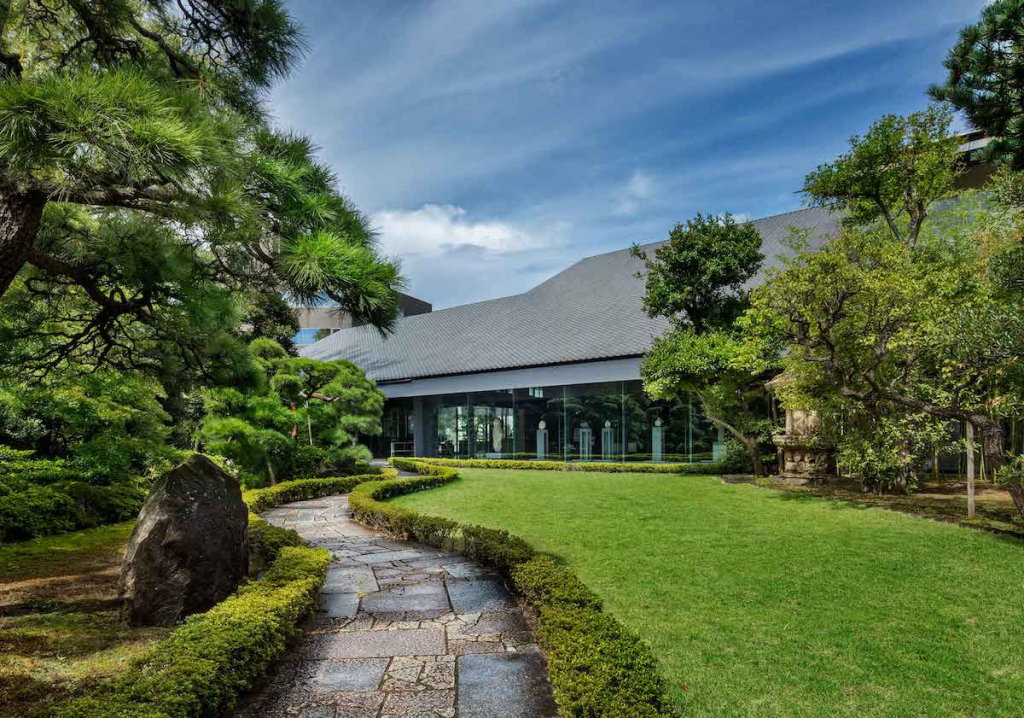If you happen to be on a shopping (or window shopping) spree or just enjoying a neighborhood stroll along Miyuki Street, the high-end fashion scene in posh Minami Aoyama, one of Tokyo’s most voguish spots, a stop at the Nezu Museum should not be missed. At first, the parade of sophisticated boutiques may sparkle a bourgeois sensation, but once you stumble upon a thicket of bamboo trees lined up against a wall fronting the museum entrance, a typical characteristic of Japanese teahouse entrances, the ambiance shifts to the presence of the Japanese tradition.
Such is the radiant beauty of Nezu Museum’s architecture that has cleverly integrated the remnants of art history, a carefully preserved oasis of teahouses, and Japan’s traditional trees and flowers as they nestle calmly around the building’s huge and modern, steel-framed overhanging eaves.
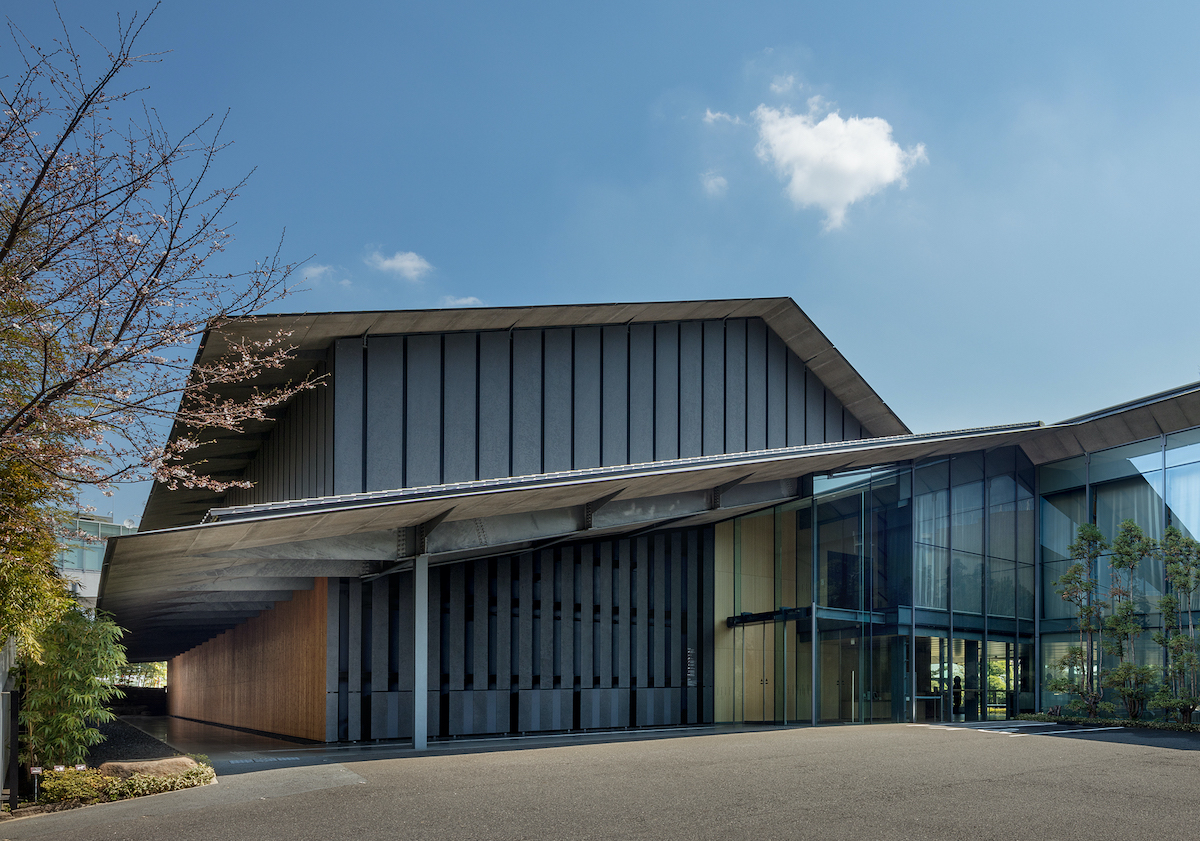
Nezu Museum © Nezu Museum
Nezu Museum: The History
Kaichiro Nezu (1860-1940) was a successful entrepreneur from Yamanashi Prefecture who became president of Tobu Railways in 1905 and engaged in many businesses, such as life insurance, beer or electric lights. He was also a member of the House of Representatives in the National Diet in 1904 and House of Councillors in 1926. Behind the shadow of his business investments and political life, Nezu was a known devotee of the Japanese tea ceremony and ardent patron of pre-modern Japanese and East Asian art. Upon his demise in 1940, his son Kaichiro Jr. established a foundation that would preserve his father’s collections. Thus, Nezu Museum was opened in 1941 on the very site of the Nezu family residence. Although a large part of the residence, galleries and garden was burned down in an air raid during World War II in 1945, Kaichiro Jr. resumed the exhibitions in a temporary makeshift structure after the war, and later on, his son Koichi assumed the directorial position at the museum, as well as supervised the large-scale renovation with Architect Kengo Kuma’s new design, finally completed in 2009.
Architect Kengo Kuma conceived of a subtle blend of the modern interior space with the traditional garden by installing glass walls to create a visible flow between the building and the environment. He explains, “I wanted the new museum to be linked naturally with its surroundings by the shade from the gentle slope of the roof. Shadows link buildings to the ground and give comfort to the architecture and warmth to the city.”
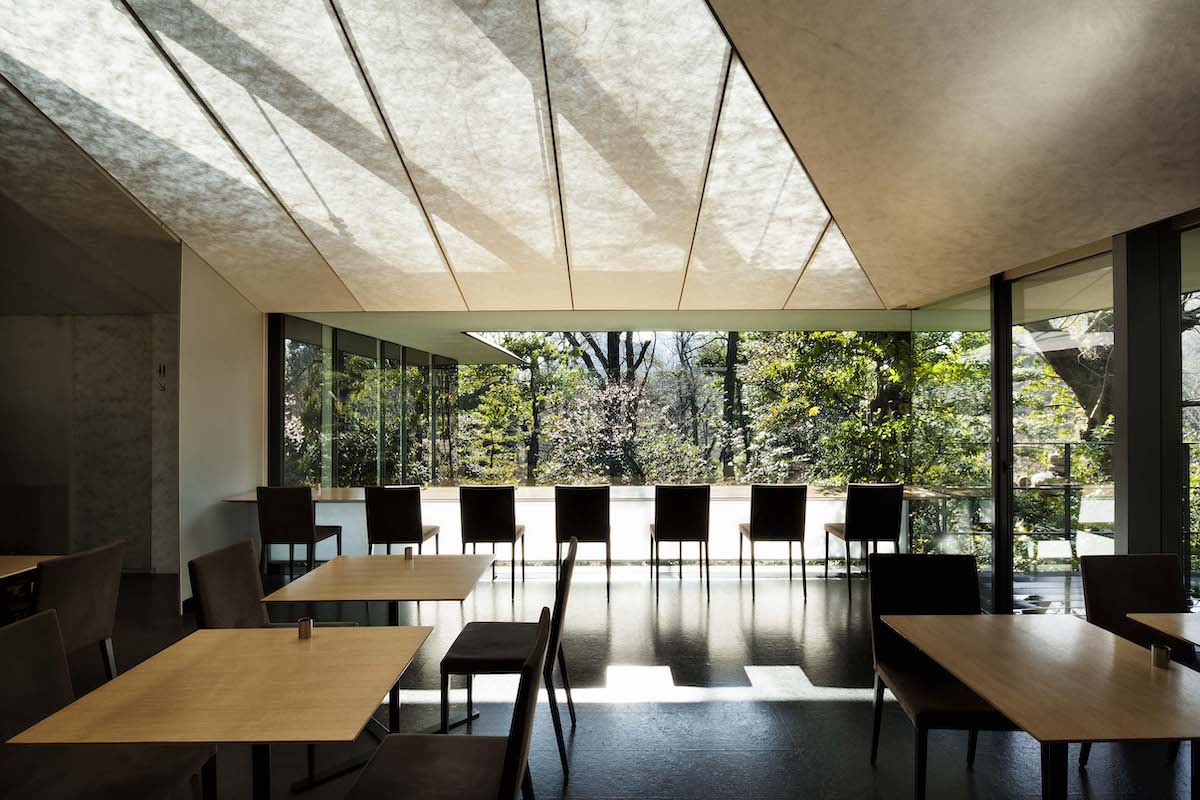
NEZUCAFÉ © Nezu Museum
Stunning Architecture
From the entrance, the visitor enters into a spiritual journey of tranquility and nature through the tsukubai stone wash basin designed as a moon-shaped boat sitting on a pebbled flooring, a stone lantern, and the wall of slim bamboo poles on one side of the stone corridor and bamboo hedges on the other side, instead of installing a fixed solid wall, to allow sunlight to penetrate through the passage.
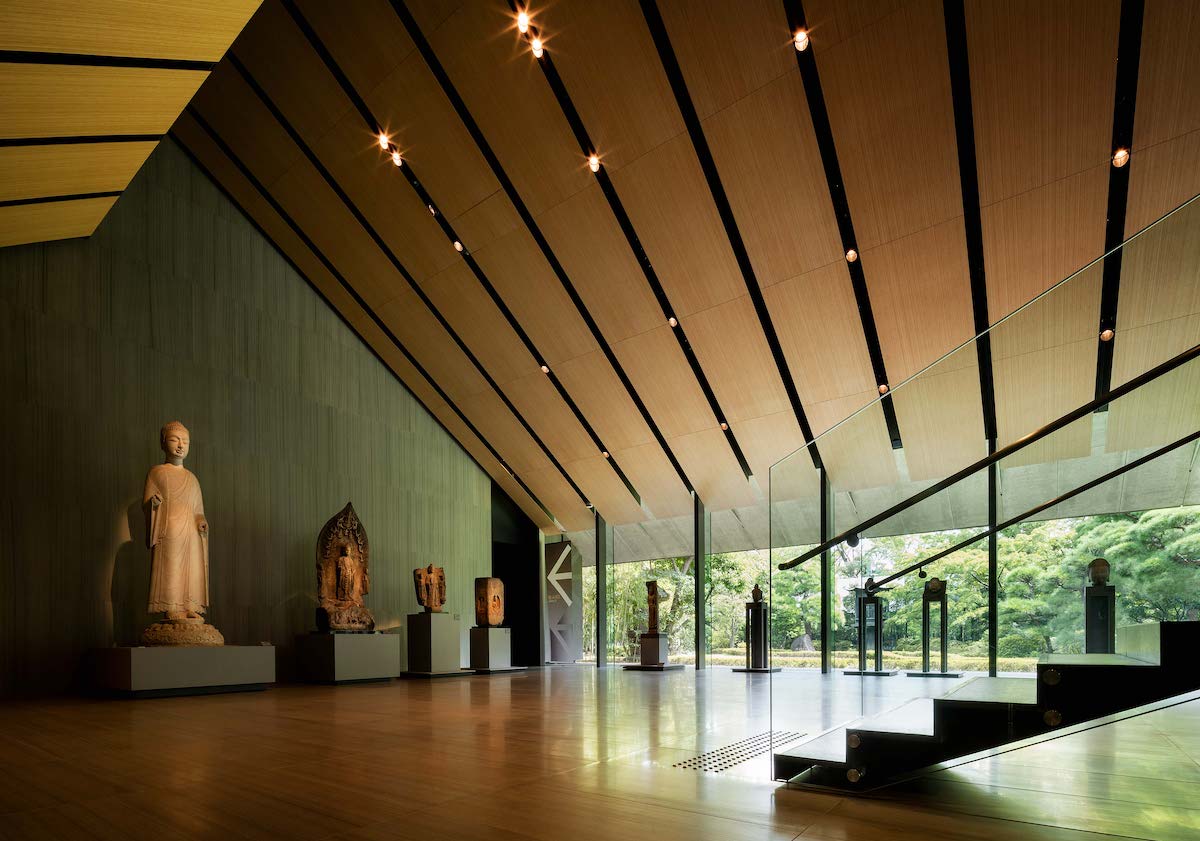
Nezu Museum Entrance Hall | © Nezu Museum
Kuma’s use of the angular pitch in the roof is further extended into the interior lobby, adding depth and spaciousness at the same time. The linear effect produced by the bamboo ceiling panels, staircase and steel posts supporting the glass wall that faces the garden imbues contemporary architecture, while simultaneously reflecting the vertical and horizontal silhouette of typical sukiya-zukuri Japanese architecture.
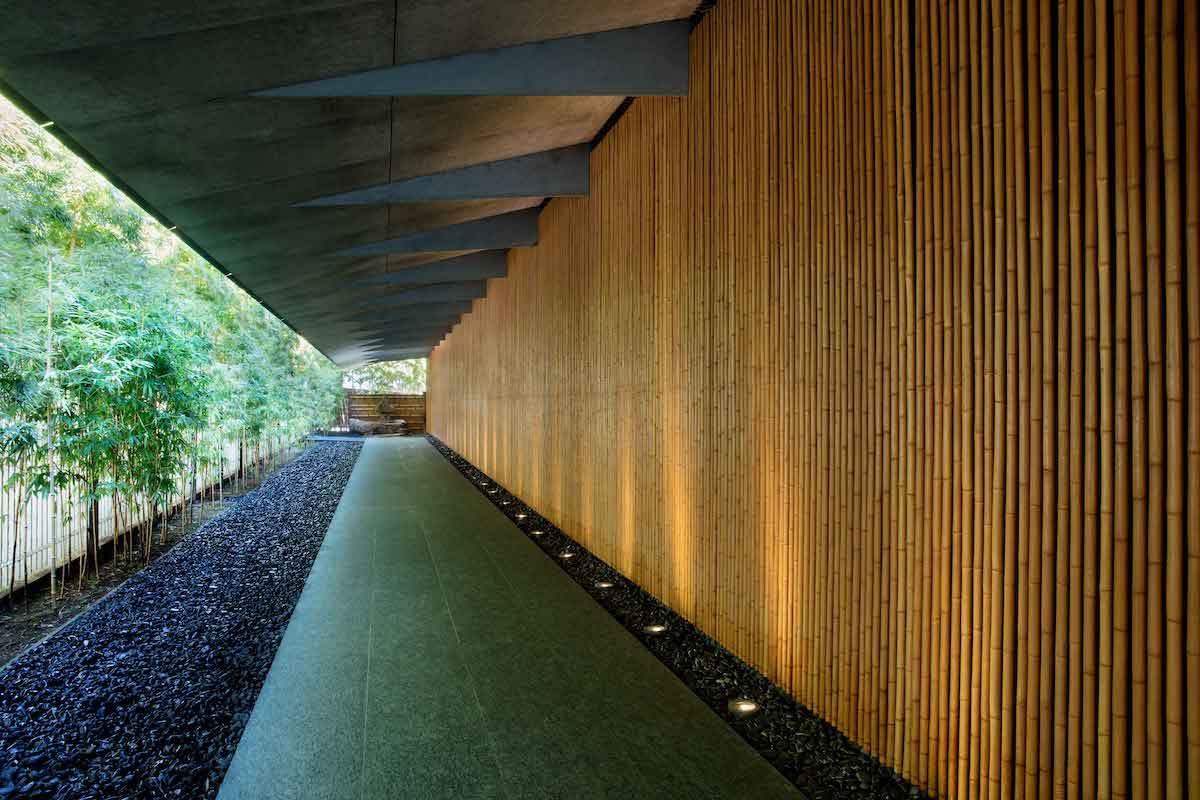
Approach from the entrance © Nezu Museum
Finally, we step out into the expansive garden spreading 17,000 square meters, which is said to exemplify the Zen ideology of seizan ryokusui or “blue mountain and green water,” and is based on the original shinzan-yukoku style of “deep mountains and mysterious valleys.” The garden is composed of the so-called Eight Views (hakkei), which include a small Higashi Kumano waterfall, Kitano Tenjin shrine gate, maple trees by Hikiinsai, bamboo grove by Yakushido, Mt. Potalaka hill, water flowing from a well head, irises at the Konintei teahouse, and the moon-shaped stone boat at the museum entrance.
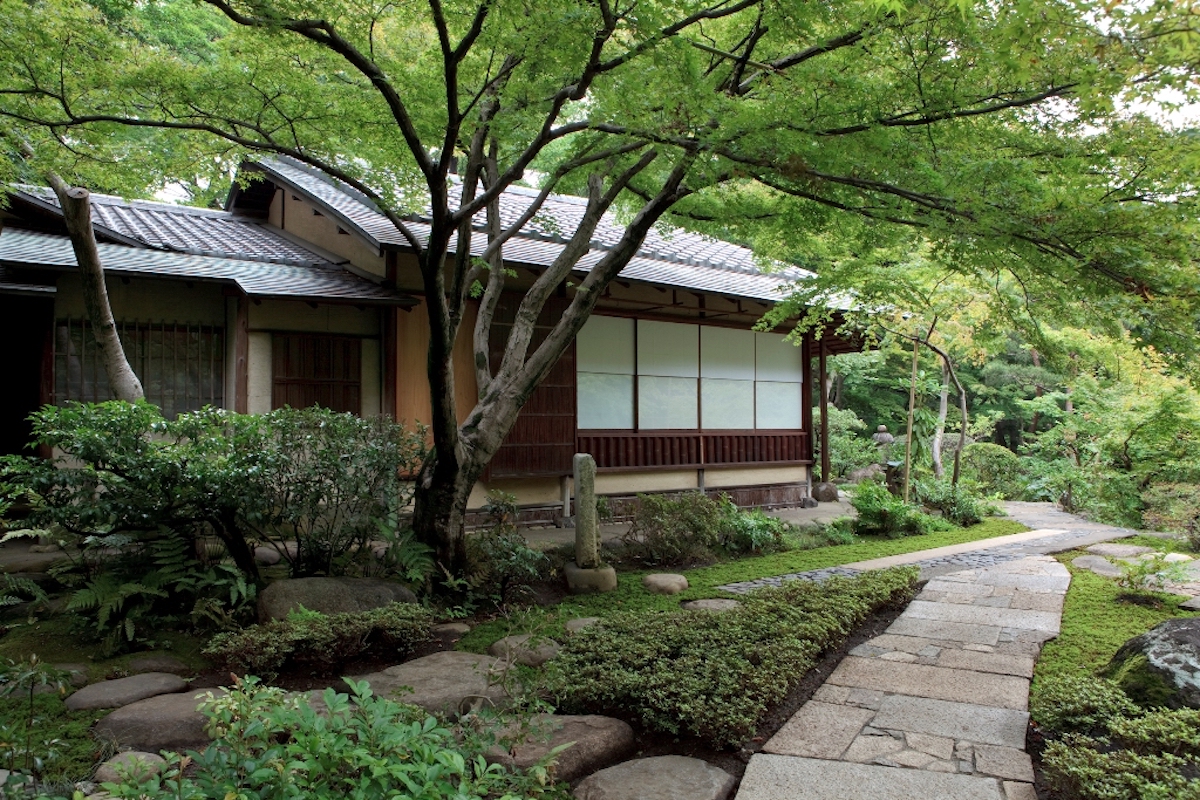
Teahouse “Konintei” in the Garden © Nezu Museum
There are, in fact, four teahouses laid out in different parts of the garden (Konintei/Bujian, Kanchu-an/Ushibeya, Hikinsai/Ichiju-an, and Ikaruga-an/Seikeitei), each with its own distinctive features. Among them, the Konintei/Bujian offers the most strategical viewpoint of the resplendent pond. The floating boat in front of the Ikaruga-an teahouse is especially charming. In early summer, exquisite purple irises bloom from the pond, which is one of the most picturesque sights of the garden. The famous screen painting of irises by Korin Ogata designated as a National Treasure, which is exhibited in the museum from mid-April for about a month, reflects the beautiful irises in the garden.
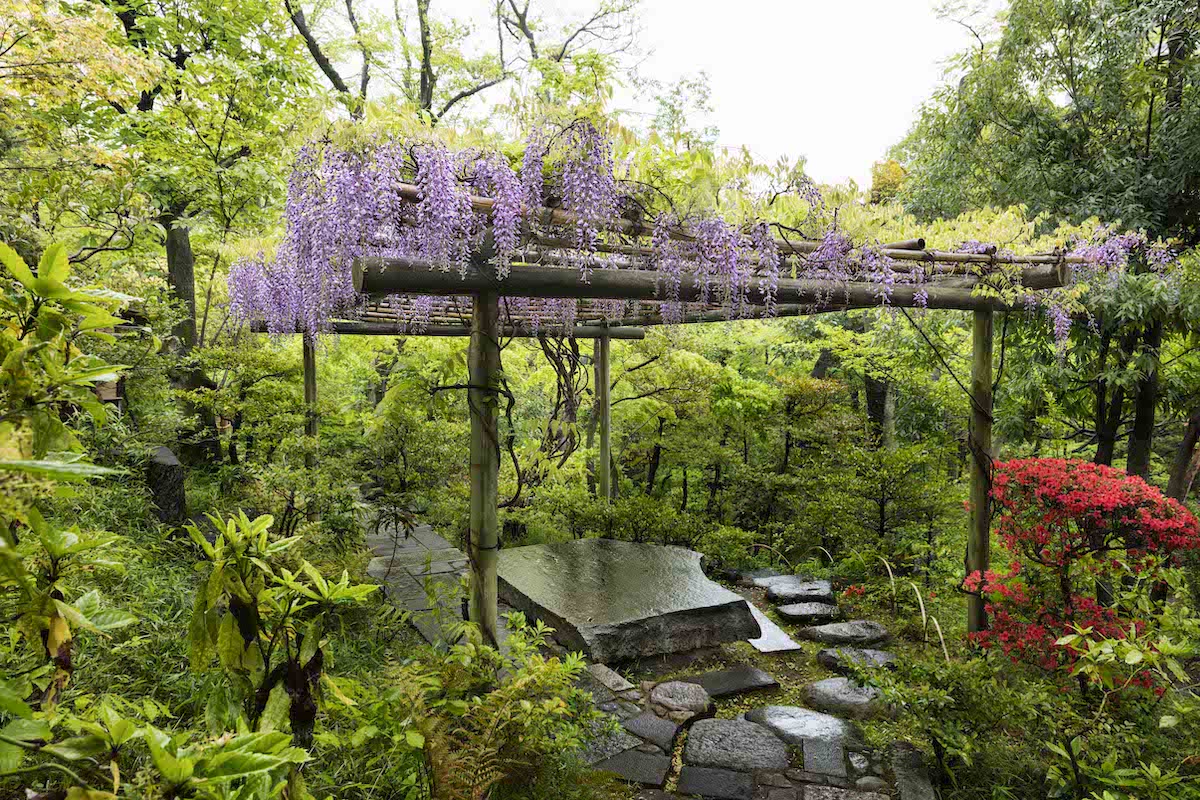
Wisteria Trellis © Nezu Museum
Enchanting wisteria flowers also hang from a trellis above stone steps during this season. Likewise, one can enjoy charming plum blossoms in early spring and scattered bright maple trees in autumn that mirror stunning reflections on the waters. During a snowy winter, the garden and pond truly resemble a deep valley.
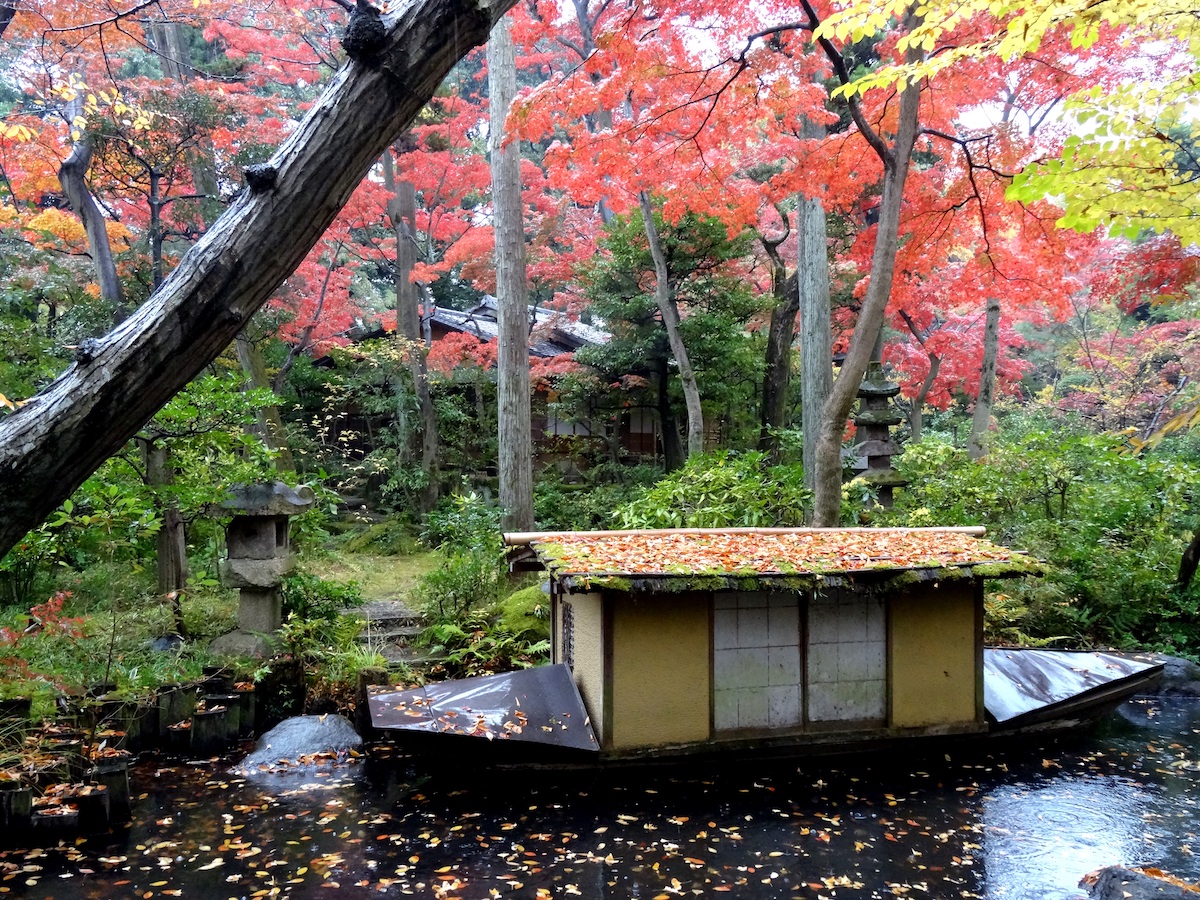
Autumn Leaves at Nezu Museum | © Nezu Museum
The museum garden takes pride in other flora that flourish throughout the seasons: Japanese berry, orchid, Japanese dogwood, Japanese snowbell, lily, weeping cherry, violet, green leopard plant, silver grass and more. There are over 150 stone Buddha statues and lanterns and road markers of various sizes scattered everywhere that accentuate stone steps, entrances of teahouses or corners of passages. Some were collections by the founder Nezu himself, and from other places in Japan, China and Korea. You may come across many interesting stone pavements with varied designs along the snake-like pathways—some with geometrical shapes, curved lines or leaf designs. The small waterfall, flowing stream, and water running through sloping bamboos echo soothing music to the ears, constituting a harmony of sounds and nature. As the garden plan encircles around the central pond, astonishing sceneries peek through the shrubs and trees from various angles and elevations.
After the enjoyable stroll, you can stop above the hill for a restful cup of coffee or tea and a lunch plate or sweets at the NEZUCAFÉ, surrounded by a glass wall on three sides, and offering spectacular panoramic views of the garden.
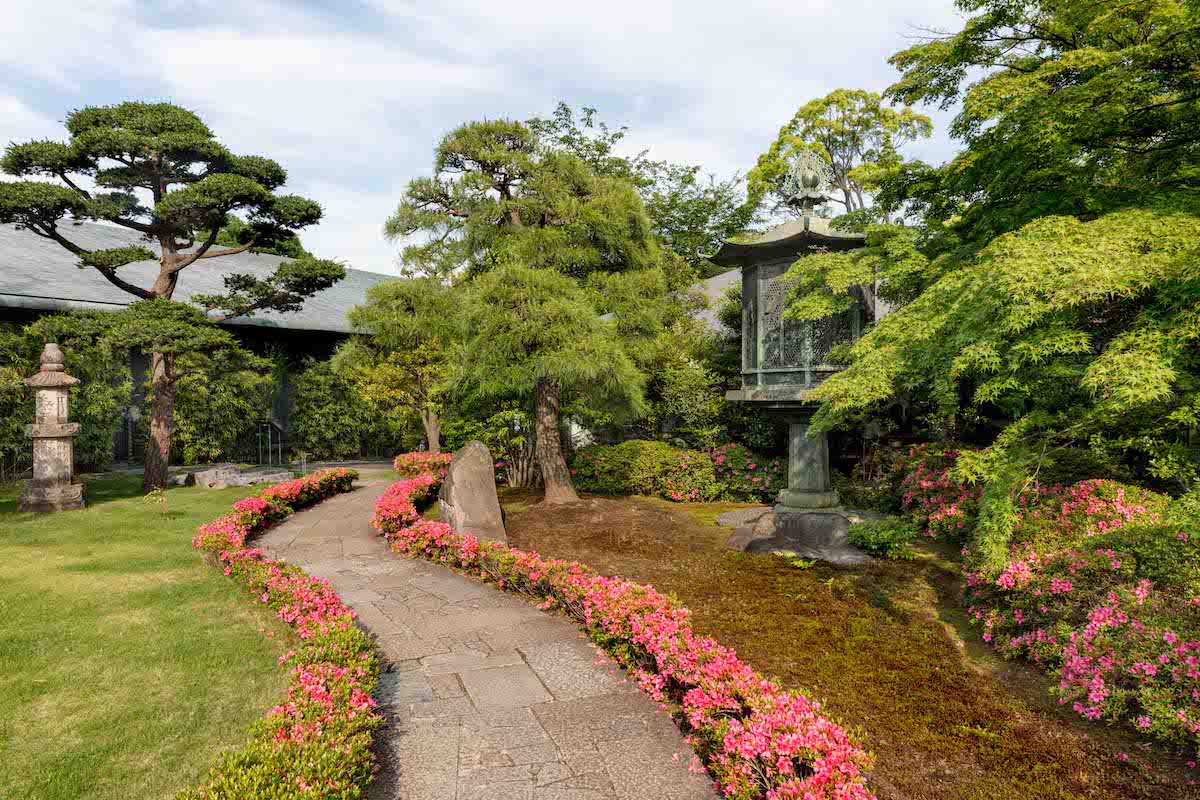
A Path to NEZUCAFÉ © Nezu Museum
The museum collection comprises of about 7,400 Japanese and East Asian pre-modern artworks, including seven National Treasures, 87 Important Cultural Properties, and 94 Important Art Objects of different genres: painting, calligraphy, sculpture, metalwork, ceramics, lacquerware, wooden and bamboo craft, textiles, armor, and archaeological specimen spread on two floors, which boast of the latest lighting technology, plus a basement floor that consists of a lecture hall and the entrance to the teahouse. On the upper floor, impressive archaeological bronze statues from the Chinese dynasties deserve ample time for viewing. In contrast with most museums, the Nezu Museum displays periodical exhibitions in short periods every year, thus, it would be wise to check the yearly calendar for the current shows.

National Treasure, Irises by Ogata Kōrin. Japan Edo period, 18th century, Nezu Museum. On exhibit: April 17 – May 16, 2021 in “The Allure of Color” exhibition © Nezu Museum
In observance of the coronavirus pandemic regulations, advanced reservations are required through the museum website.
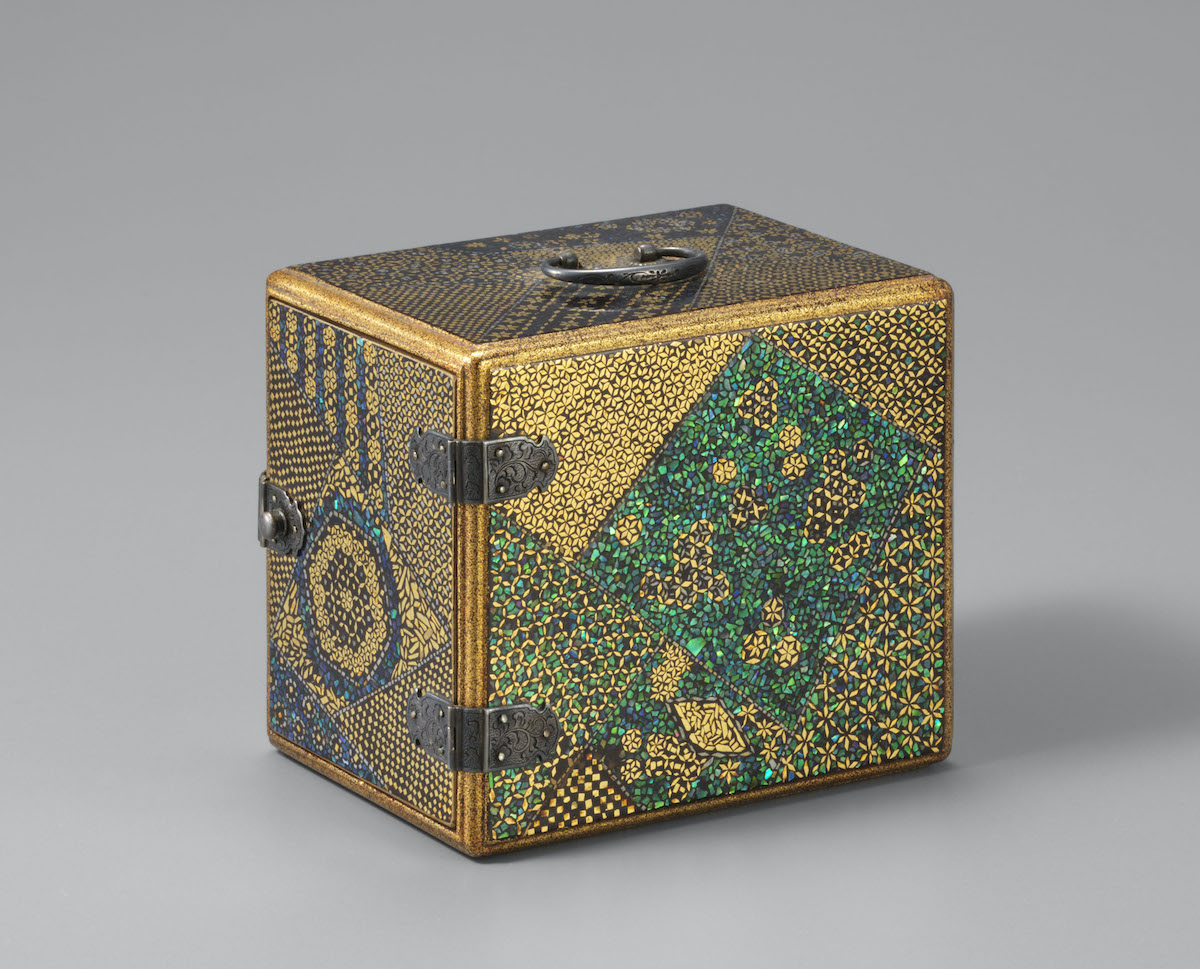
From the past exhibition “Radiant Raden”: Small Cabinet with Fabrics Design, Japan Edo period, 18th-19th Centuries. Nezu Museum, Gift of Fukushima Shizuko © Nezu Museum
With this Man’yoshu poetry anthology, the elegance and grace of the Nezu Museum and its garden absolutely breathe like the blue mountains and the green waters:
“Around my home
Through the little bamboo grove
The gusting wind
Blows faintly
On this evening.”
(Translation by Thomas McAuley)
Essential Information
Nezu Museum
Address: 6-5-1 Minamiaoyama, Minato-ku, Tokyo
For more information on the museum and its garden see the museum’s official website at www.nezu-muse.or.jp/en
Featured and top image: Main Building from the Garden © Nezu Museum. All images courtesy of © Nezu Museum

